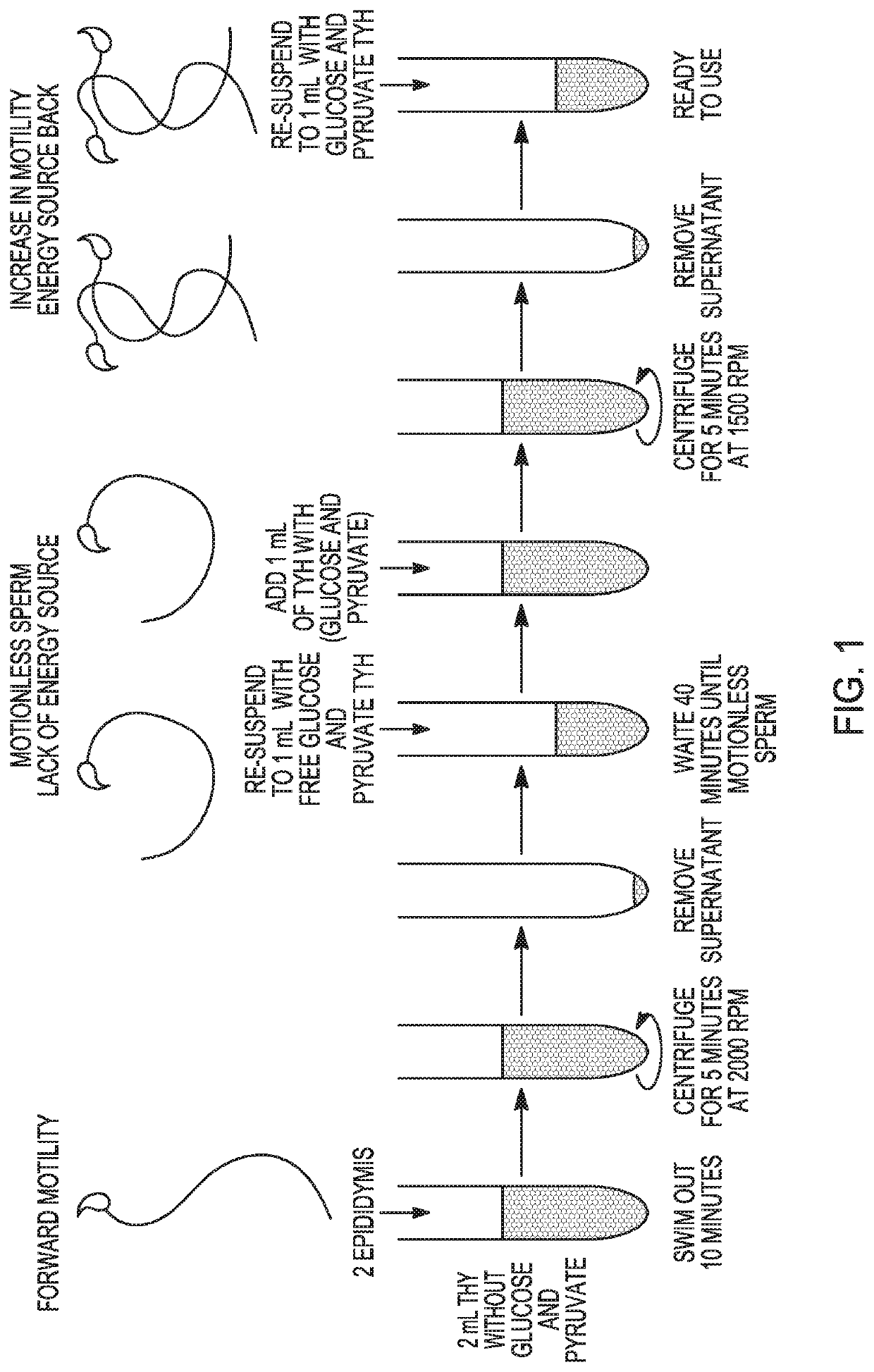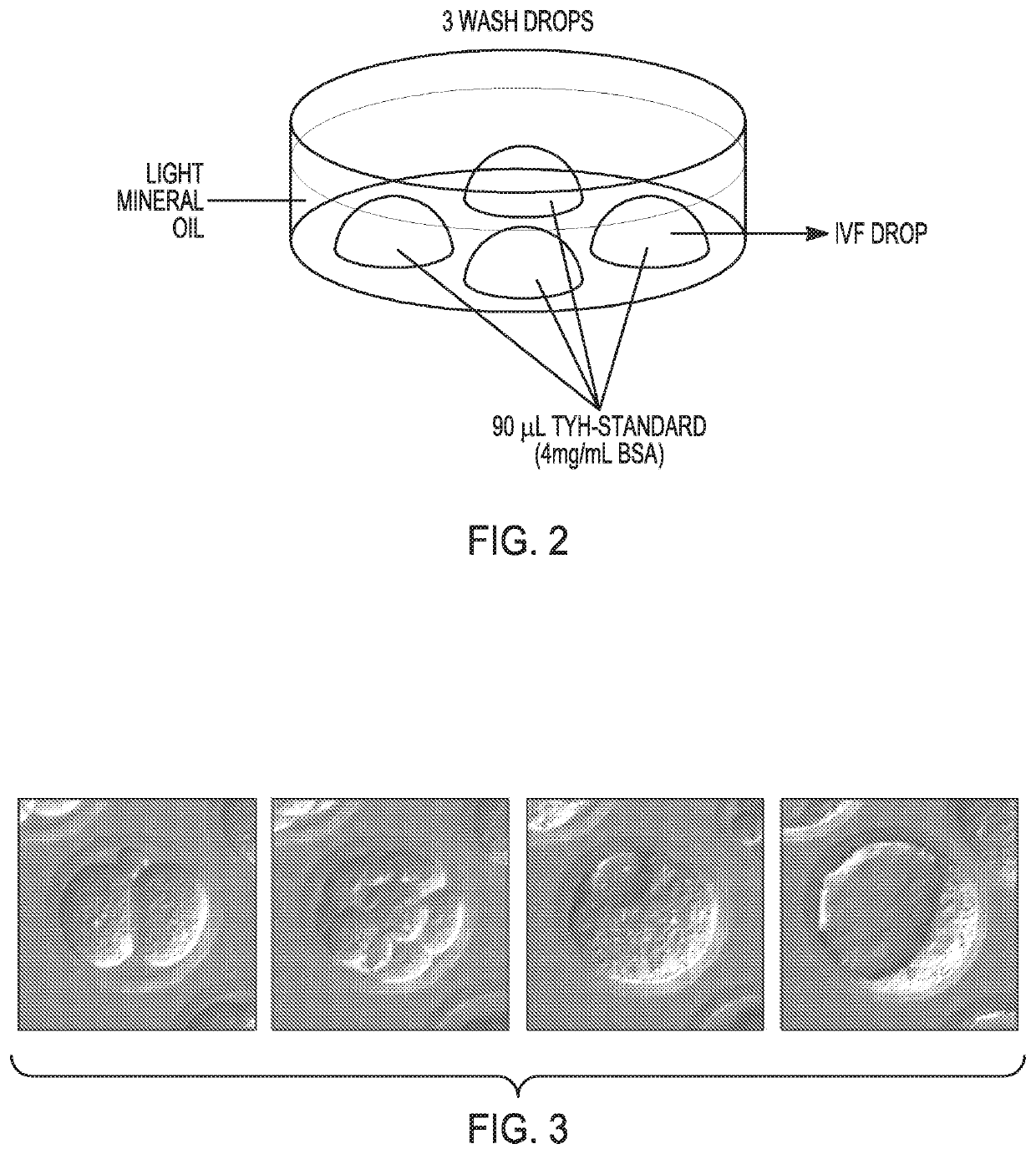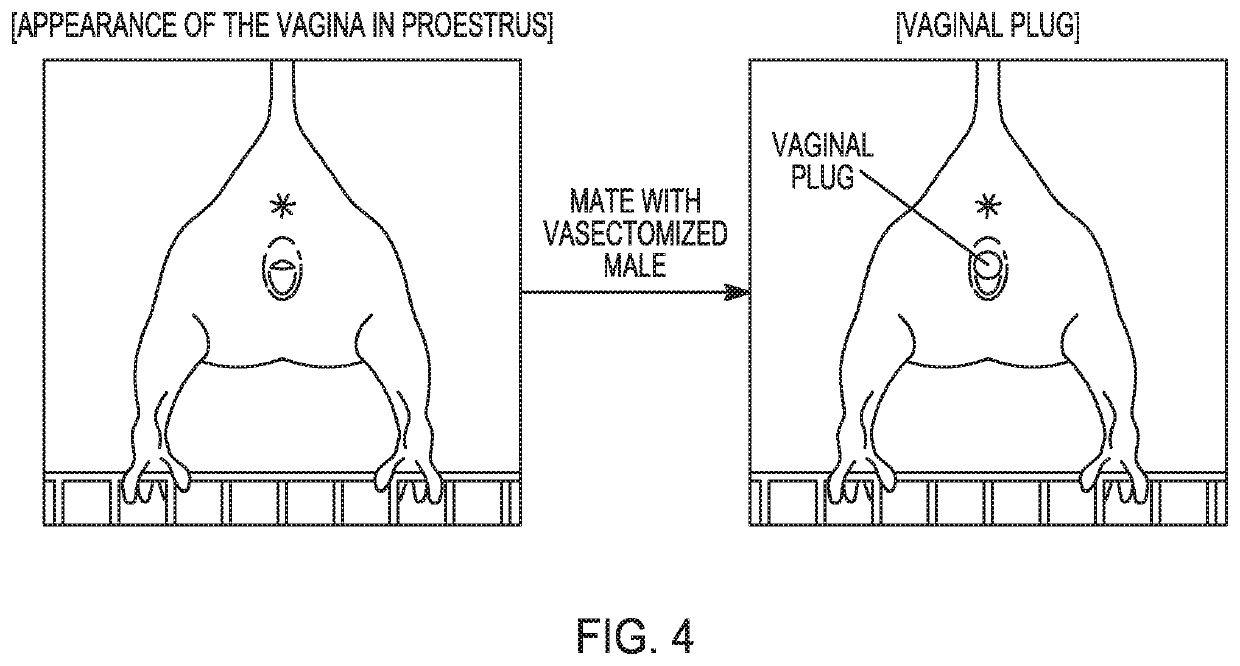Method to prepare sperm
a sperm and sperm technology, applied in the field of sperm preparation, can solve the problems of high cost of art methods, difficulty in commercially feasible use of art within the animal breeding industry, and high and achieve the effect of reducing the number of sperm cells
- Summary
- Abstract
- Description
- Claims
- Application Information
AI Technical Summary
Benefits of technology
Problems solved by technology
Method used
Image
Examples
example i
n Protocol
Materials
[0080]Males CD1 male 3-8 months old (or retired breeder) or C57BL6 mice; Females CD1 or C57BL6 6-8 weeks old; Hormones PMSG (G4877) y hCG (C1063); Filter (Sterivex 0.2 μm Millipore); Syringe (10 ml to filter media and 1 ml to inject hormones); BSA (Sharlip et al.), TL-Hepes Medium; TYH Standard; TYH Standard Free (Glucose and Pyruvate free); BSA (Sigma); 50 ml Falcon tubes; 15 ml Falcon tubes; 2 ml Falcon Tubes; 2 ml dishes; Tissue Culture dish 35×10 mm (Falcon ref 353001); Glass microcapilar (pipette); Aspirator tube; light mineral oil Fetus Bovine Serum (Atlanta Biologicals cat #S11150H); KSOM ((cat #MR-106-D))
Methods
[0081]Motility Assay (FIG. 1)[0082]1. Sacrifice male mouse via dislocation or CO2 chamber.[0083]2. Open the abdomen with fine scissors. Begin from the pelvic area and make a V shape to see all the organs[0084]3. Look for the testis (white pale balls) and follow the seminiferous tubules until you find the cauda of the epididymis (looks like a small b...
example ii
ertilization / Starving Protocol
Methods
Day 1:
[0100]Inject females with 5 IU (100 were prepared and diluted in sterilized PBS and keep to −20° C.).
Day 3:
[0101]Inject females with 5 IU (100 10 μm. (48 h after PMSG).
Day Before IVF
Media:
[0102]5 ml TYH—Standard (4 mg / ml BSA) IVF at 37° C., 5% CO2.[0103]8 ml TYH—free glucose and pyruvate (4 mg / ml BSA) for sperm swim out at 37° C., 5% CO2.[0104]TL-HEPES supplemented with 5% Fetus Bovine Serum prepare the same of the IVF
For Oocytes:
[0105]Prepare Tissue Culture dish 35×10 mm with 90 μl of media TYH—Standard (4 mg / ml BSA) IVF at 37° C., 5% CO2. See FIG. 2 for further details.[0106]Put different plates into incubator at 37° C., 5% CO2.
For Oviducts:
[0107]Prepare Tissue Culture dish 35×10 mm with 90 μl of media TYH—Standard (4 mg / ml BSA) IVF at 37° C., 5% CO2.[0108]Put different plates into incubator at 37° C., 5% CO2.
For Sperm:
[0109]Prepare 2 ml tube of TYH (Free of glucose and pyruvate for sperm swimming out)[0110]Put tube into incubator at 37...
example iv
m
[0209]It is well known that out-breed and in-breed mice sperm differ in the ability to capacitate and fertilize the egg. According to the National Institute of Health (NIH-US) almost 90% of research is done in in-breed mice and the most common breed used is C57BL6. Wild type C57BL6 mice have shown low fertility in vivo compared to out-breed strains. In addition, when it comes to sperm in vitro hyperactivation and fertilization, fertility is also reduced. Therefore sperm from C57BL6 mice are a good model to show if a particular treatment can improve fertilization parameters (Navarrete et al., Sci. Rep. 2016, demonstrating that a transient exposure to calcium ionophore A23187 improves hyperactivation and fertilizing capacity of sperm from C57BL6 / J mice in vitro. In the experiments presented below, C57BL6 in-breed mice strain was used.
Sperm Cell Signaling Cascades and Protein Phosphorylation:
[0210]After ejaculation, mammalian sperm are not able to fertilize, they require being in the ...
PUM
 Login to View More
Login to View More Abstract
Description
Claims
Application Information
 Login to View More
Login to View More - R&D
- Intellectual Property
- Life Sciences
- Materials
- Tech Scout
- Unparalleled Data Quality
- Higher Quality Content
- 60% Fewer Hallucinations
Browse by: Latest US Patents, China's latest patents, Technical Efficacy Thesaurus, Application Domain, Technology Topic, Popular Technical Reports.
© 2025 PatSnap. All rights reserved.Legal|Privacy policy|Modern Slavery Act Transparency Statement|Sitemap|About US| Contact US: help@patsnap.com



